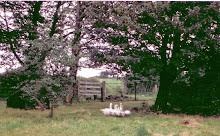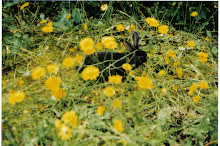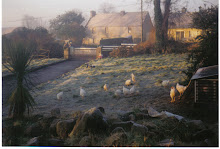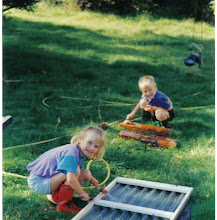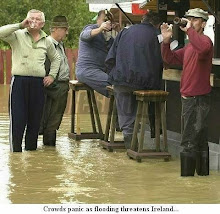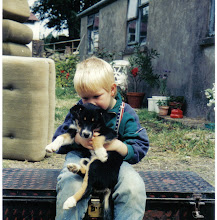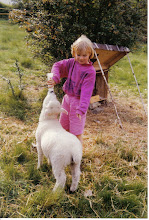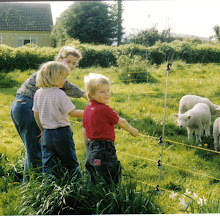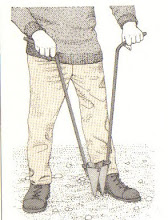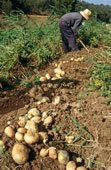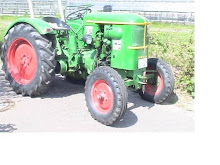Sunday, January 23, 2011
The good old AGA
The old farmhouse had a coal (anthracite) fired hearth called AGA, the Rolls Royce under the ranges in the British Isles. Our model was a 4 door oven in light beige, with the hottest oven top right, the next hot bottom right, the coolest top left and bottom left somewhere in between temperature-wise. On top sat an iron range with two big rings. On the left ring, I would do my cooking and frying and then shove the pan to the right ring that offered a little less heat.It probably dated back to the 30s whereas the house itself had been built around 1890.The AGA had to be refilled with coals twice a day,first thing you got up and last thing at night. For that you had to lift the left ring on the surface and pour the coal in. Also did one have to empty the ashes first thing, i.e. before breakfast and then again late at night. The middle door at the bottom opens up for that. With a poker you rattle in the bowels of the AGA and the ashes start falling out. A dusty affair, too.Letting it go out ensued in a major cleaning and relighting operation that you didn't wish on anyone. Going away overnight was not on, even a late night at a party was dodgy or you would risk a lot of cold ashes. The coals were store across the yard in one of the sheds and had to be carried over once a day. The ashes were emptied behind the boiler room, a mere ten feet outside from the door. Later they would be used for composting or thrown on muddy paths and farm tracks that were notoriously squishy wet to soak up the water in the soil, i.e. for paving purposes.In my previous life, I had only been used to an electric range. It took a while to get used to it because it was much slower in getting things to the boil and would also burn more easily because the temperature was not adjustable. The previous owner used to simmer his porridge in the slowest oven over night (top left).It also came in handy to keep little premature and sickly lambs cozy and warm in a cardboard box over night on top of the stove. Again on the left as much as you could corner it or they would roast. When we did it the first time, I was afraid they might jump out of the box over night and fall onto the kitchen floor. They didn't, but usually looked perkier in the morning. The AGA was the centerpiece of the kitchen which also gave a lot of warmth. In fact, before we installed a central heating system into the old house, the previous owners had only relied on the AGA's efficiency , also for heating up the water and their bathroom. But that was done from another smaller one situated in the dining room which became part of our extended kitchen when we knocked the diving wall. I adorned it cottage-style with copper pans, lace and dried flowers. A sight to behold if it hadn't been for the soot that it also produced on a daily basis. Not ideal for the household members who suffered from asthma.
Monday, January 10, 2011
The Land is asleep but not the Farmer
Life on the farm is relatively quiet at the beginning of the new year. Animals still have to be fed and watered but there is a calm before the lambing and calving season gets under way and land has to be plowed. Now is the time to fix fences and do repair jobs around the farm - and the house if there is time left. Also time for planning what to plant, which seeds to sow shortly when the sun feels a little warmer and "there is a stretch in the evenings", as Pauline would say. You can feel the evenings get that little bit longer by the end of January in spite of cold weather. The first snowdrops may show at the bottom of the orchard, followed by some crocuses, and a month later by early daffodils. This is my favorite time of the year with hope of a new growing season in the air - even if everything may still be frozen and blown to smithereens well into April.Our neighbors were having their first early lambs in the cold and dark of mid winter. A joy to see them frolicking in the fields but a lot of hard work to make them survive. Mac decided he would wait till later into spring so that the lambs had an easier start. You have to check on pregnant ewes at night, especially on first timers who had no more idea of what they were doing than we had.
Subscribe to:
Comments (Atom)




























